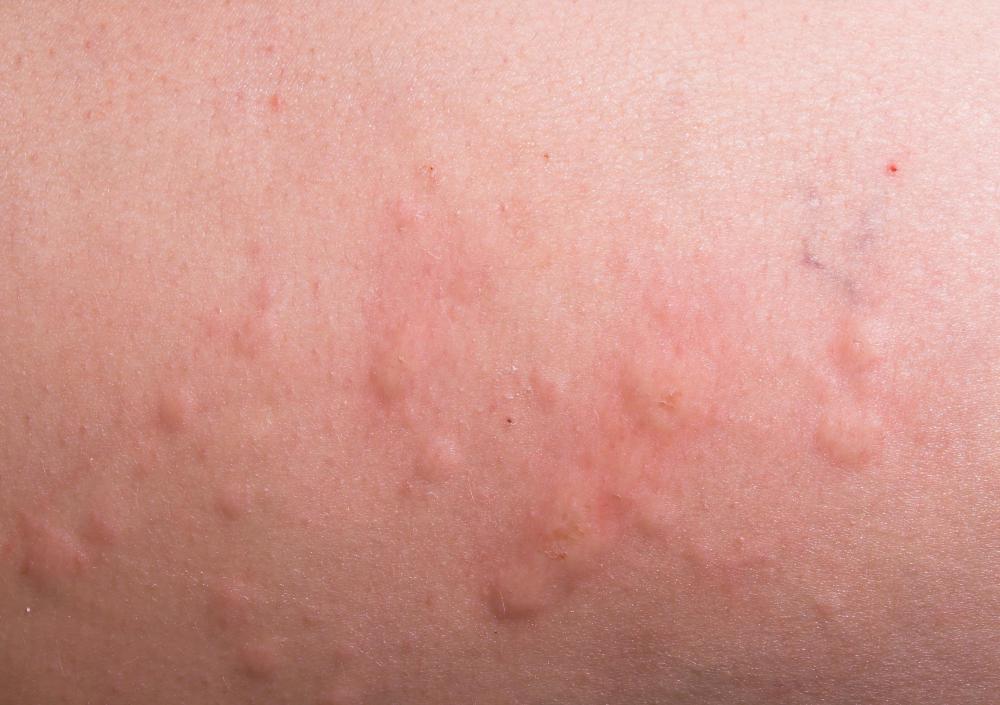At WiseGEEK, we're committed to delivering accurate, trustworthy information. Our expert-authored content is rigorously fact-checked and sourced from credible authorities. Discover how we uphold the highest standards in providing you with reliable knowledge.
What are Saline Nasal Drops?
Saline nasal drops are a liquid solution that can be dropped into the nose for a variety of reasons. For example, these drops may be used to treat nasal congestion caused by colds and allergies as well as to irrigate the sinuses. They are also used to moisten dry parts of the nose, and some doctors recommend them for use after nasal surgery. These drops are often used by people who want to treat congestion without ingesting medication.
The saline solution used in nose drops is made by dissolving sodium chloride, or table salt, in water. Sodium chloride is considered safe not only for nose drop preparations, but also for making chlorine to use in treating water and preserving food. Saline is widely used in health preparations for everything from replacing lost fluids in dehydrated patients to storing contact lenses.

Finding saline nasal drops typically requires a trip to a drug or grocery store. The drops are sold in ready-to-use form and usually provide instructions that detail how often they should be used and how many drops a patient should place in his nose. However, some people prefer to make their own drops in order to save money. Others want to avoid the additives found in many commercial preparations. Some commercial saline nasal drops contain such additives as benzyl alcohol, iodine, and benzalkonium sodium.

For those who prefer to make their own saline nasal drops, the process is fairly simple and involves stirring about 1 teaspoon (4.92 milliliters) of non-iodized salt into one cup (236.58 milliliters) of water and boiling the mixture for about 10 minutes. After boiling, it’s important to keep the solution sterile, preventing the introduction of harmful substances into the body. For this purpose, a person may sterilize a glass jar and use it to store his nasal drops, sealing it with a lid. Once sealed, it can be stored for about 30 days, though it should be used within 48 hours of opening the jar. A patient can then use a clean bulb syringe to withdraw solution from the jar and place a couple of drops, or the number recommended by a doctor, in each nostril.

Though most people use saline nasal drops without problems, some people note burning when they use them. This burning may be more likely to develop when using commercial preparations that contain additives rather than homemade varieties or saline solutions without added chemicals. Additionally, some people may have an allergic reaction to saline, which may include hives, itching, swelling of parts of the face, or breathing problems.
AS FEATURED ON:
AS FEATURED ON:



















Discussion Comments
@dfoster85 - That's a good idea! I had a similar experience. And my baby was all congested, too, because of having been a surgical birth. Somehow, they brought the saline nasal drops for my infant right away and I had to wait and wait. (Each person has to have his or her own bottle, of course.)
The drops are a good thing for a new or expectant mom to have on hand. There's not a lot you can do for a stuffy baby, but the drops soften up the congestions so baby can work it out. (It also makes it easier to use the nasal aspirator, but the latest word is that those should be used very, very sparingly. I admit, I usually just used my pinky nail to get out boogers!)
If you are going to make your own saline nose drops, you might want to use distilled water. I actually haven't tried making my own drops, but I used to do nasal rinsing. I would buy the packets at the store and then mix them up at home. When I used unfiltered tap water, I would get terrible burning, and while boiling the water sterilizes it, it is of no use at all for removing minerals. Distilled water, which you can buy by the gallon at the grocery store in the water aisle, has had these impurities removed and it's more comfortable for some people.
I would encourage anyone who is going into the hospital to have surgery or give birth or really anything where you might wind up on oxygen to throw some normal saline nasal drops in your bag before you leave. I had to have oxygen following a long labor and C-section, and it dried out my nose something awful. Then I hate to wait for my doctor to *prescribe* saline and for the nurses to get it to me, which took hours. I wish I'd just brought some!
Post your comments